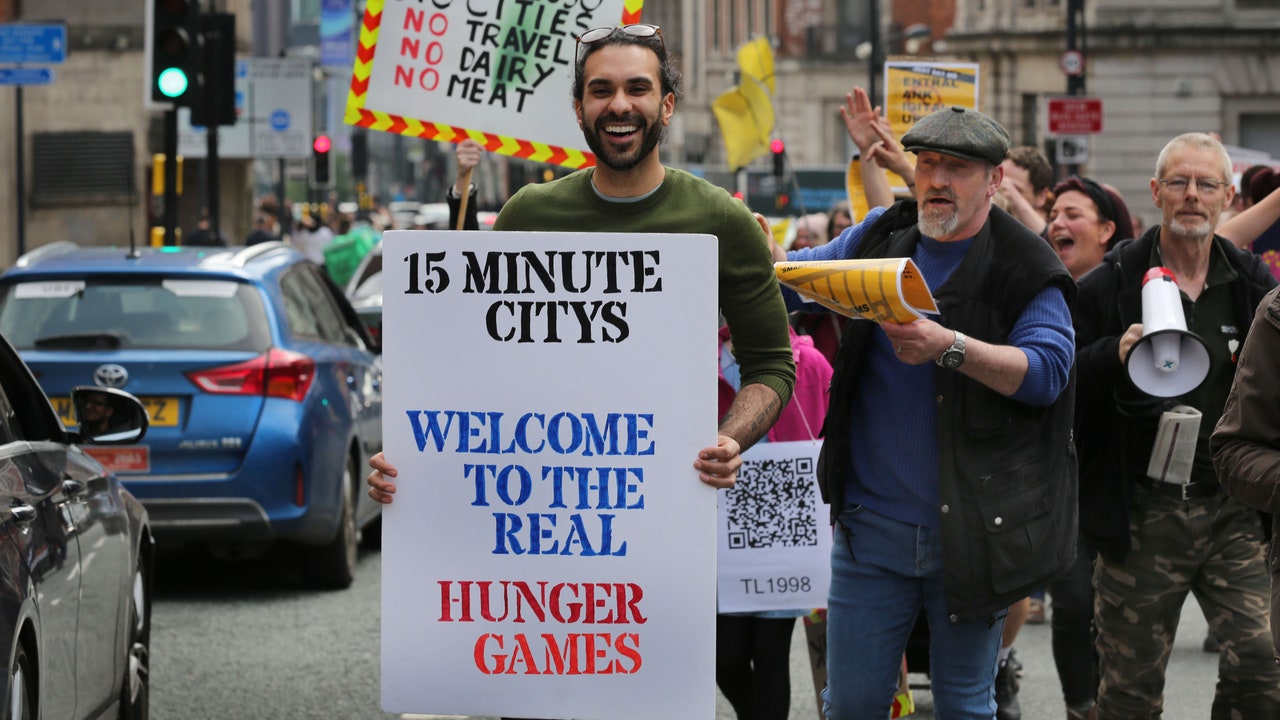Why Are Conspiracy Theorists Worried About “15-Minute Cities”

Since 2020, Paris has been putting the 15-minute city theory into practice. This has resulted in changes that seem small but have a big impact, like opening schoolyards to the public on the weekends, banning cars on streets near schools, and building on an existing network of bike lanes and cycling routes.
But in America, a country where the car largely reigns supreme, is this feasible? Moreno doesn’t deny that inherent difficulty but says the time has come to accept a lifestyle change for the future of our climate and the planet. He pointed to Amsterdam as a city that changed its car culture significantly. There, car use grew after World War II, which, soon enough, led to an increase in deaths. In 1971, more than 400 children died in traffic accidents in The Netherlands, according to The Guardian. Citizen protests and bicycle demonstrations proved effective and eventually, the country became one of the most bike-friendly places around the globe with 22,000 miles of bicycle paths. In Amsterdam, 36% of all trips taken are by bicycle, based on 2015 data.
“In America, you are concerned as well with heat waves, with the rising of the sea, with pollution,” Moreno says. “It is mandatory for the American people to change lifestyles.”
San Francisco strategic advisor Dan Luscher was called back to urbanism in 2019 after studying to be a civil engineer and then working in alternative energy and tech. He started The 15-Minute City Project shortly after as a way to write and blog about urbanism and what he sees as an important development in the space. It wasn’t so much that the concept was new. Luscher points as precedent to garden cities in England at the turn of the 20th century and the New Urbanism movement of the 1980s and 1990s. “There’s a long lineage,” he says. “But this particular framing of the issue has gotten a lot of attention because it’s very intuitive and it resonates with a lot of people.”
The COVID-19 pandemic was a flashpoint in the United States for what cities could be like without cars, Luscher says. In the first two months of the pandemic, miles traveled in a vehicle decreased in some US cities by as much as 75.5 to 88.9%, according to data from the Brookings Institution, published in May 2020. “It sort of opened our eyes when cars stopped driving briefly during initial lockdowns in the US and Europe,” Luscher says. “How much space do we give to cars and what can we do with that space?”
Much like what’s happening in Paris, working toward 15-minute cities starts with small policy and regulatory changes, like changing zoning to allow for multifamily homes, eliminating subsidized free parking, and reducing some of the governmental constraints that have prevented us from making cities better connected, Luscher says. He points to Los Angeles’s Livable Communities Initiative as a constructive effort. The group is working to increase walkability and get more flexible zoning approved on major corridors. “They have the right strategy in not doing it top-down, but bottom-up,” he says because residents can take action to make their city better rather than waiting for a broader government program to institute mandates. “If they are able to succeed then you can say, ‘Well, they’ve done it in LA.’ No other big city has an excuse at that point.”
What do climate activists think about 15-minute cities?
Given that our very future is threatened, could these small changes actually make enough of a difference? Twenty-year-old Alice Dubois, cofounder of Fridays for Future France, is optimistic. The political science student at Sciences Po’s campus in Nancy, France, started the French chapter of Greta Thunberg’s climate strike movement as a way to energize youth around climate during the pandemic. Dubois and her seven friends and cofounders felt that striking was an “easy way to have a first step” in climate activism.


